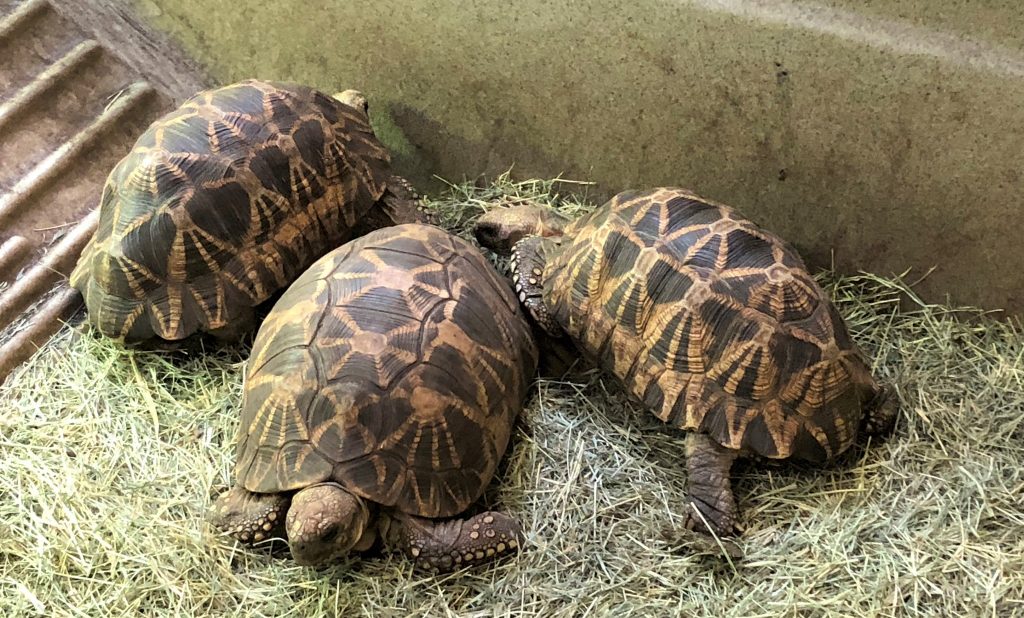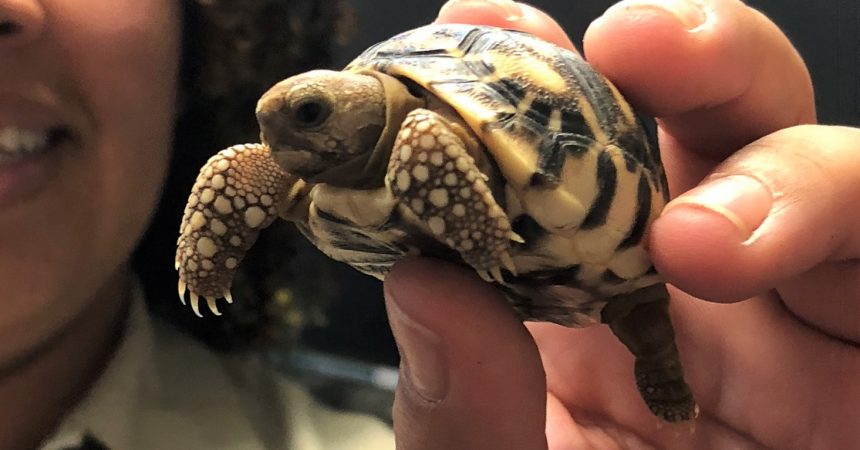Zoo InternQuest is a seven-week career exploration program for San Diego County high school juniors and seniors. Students have the unique opportunity to meet professionals working for the San Diego Zoo, Safari Park, and Institute for Conservation Research, learn about their jobs, and then blog about their experience online. Follow their adventure here on the Zoo’s website!
 Most tortoises spend their days basking in sunlight and munching on leafy greens. While the Burmese star tortoise is no different, as a critically endangered species, its survival hangs delicately in the balance. On Wednesday, we met Ms. Rachael Walton, a Reptile Keeper who introduced us to some of the 1,600 animals in the reptile collection. Among them was the Burmese star tortoise.
Most tortoises spend their days basking in sunlight and munching on leafy greens. While the Burmese star tortoise is no different, as a critically endangered species, its survival hangs delicately in the balance. On Wednesday, we met Ms. Rachael Walton, a Reptile Keeper who introduced us to some of the 1,600 animals in the reptile collection. Among them was the Burmese star tortoise.
Burmese star tortoises can be recognized by the star-like pattern of yellow lines on their carapace, or shell, which helps them camouflage in the lush vegetation and soil of their natural habitat. Equipped with a broad beak, they can eat their favorite vegetables with ease. Their Jacobson’s organ, located on the roof of their mouth, allows them to thoroughly smell and taste the air, giving them a better sense of their surroundings. However, their slow maturation rate of 20-25 years means they are highly vulnerable to environmental disruptions and human interference, which has paved the way for many conservation efforts.
Native to Myanmar, this species of tortoise is listed as critically endangered by the International Union for Conservation of Nature (IUCN), with habitat destruction and the illegal pet trade mostly to blame. Deforestation leaves these tortoises without a viable home and often renders them too weak to reproduce or lacking the habitat to do so. It also eliminates the vegetation they rely on for food, meaning they have extreme difficulty surviving for extended periods of time. In addition to habitat loss, Burmese star tortoises’ high demand in the illegal pet trade is worsening the situation. Taken away from their native habitat and sold for high prices, their numbers began falling rapidly. Human interference and invasive predators, such as dogs, forced them to face threats they had never experienced before. These issues are what brought the Burmese star tortoise to the spotlight, as there was no focus on them prior to this discovery. As new research efforts and breeding programs were created, the journey of protecting this species in the wild began.
Naturally, baby tortoises face slim chances of survival in the wild. Large mammals and a multitude of other predators will not pass up on an effortless, defenseless meal, making tortoise eggs and slow-moving young an easy target. Mothers do not play much of a role in raising their young, meaning these reptiles are on their own as soon as they break out of the egg. With all these factors working against them, it may be difficult to believe that there is hope for the Burmese star tortoise.
However, the San Diego Zoo, working alongside the Turtle Survival Alliance and the Turtle Conservancy, hopes to bolster the population of the Burmese star tortoise and bring them back from the brink of extinction. So far, their efforts have been successful, with the current breeding female producing three clutches of baby tortoises. Each clutch of eggs plays a critical role in the conservation story of the Burmese star tortoise, and brings the Zoo one step closer to its mission of ending extinction.
Jennah, Species Spotlight Team
Week Three, Fall Session 2018


